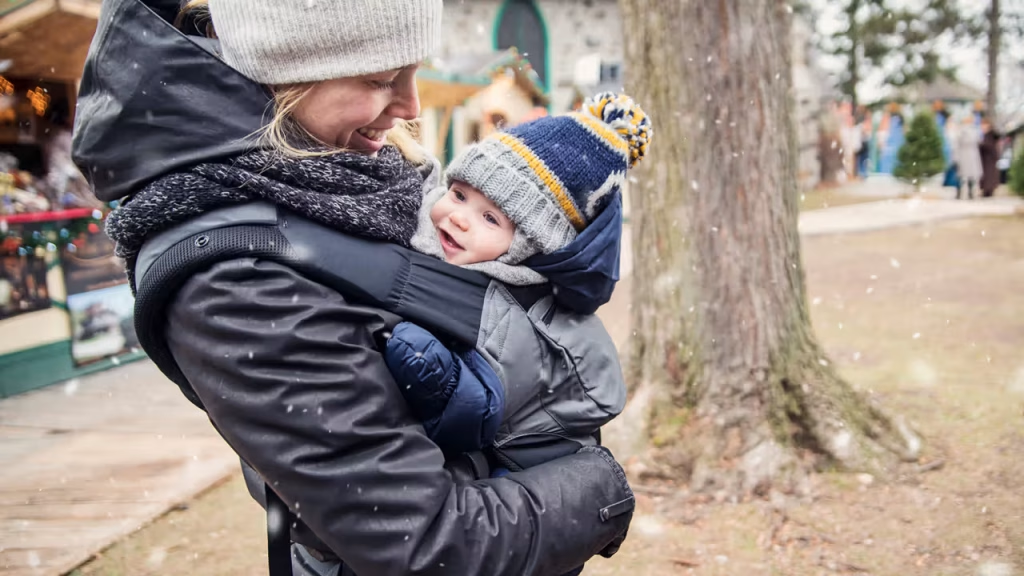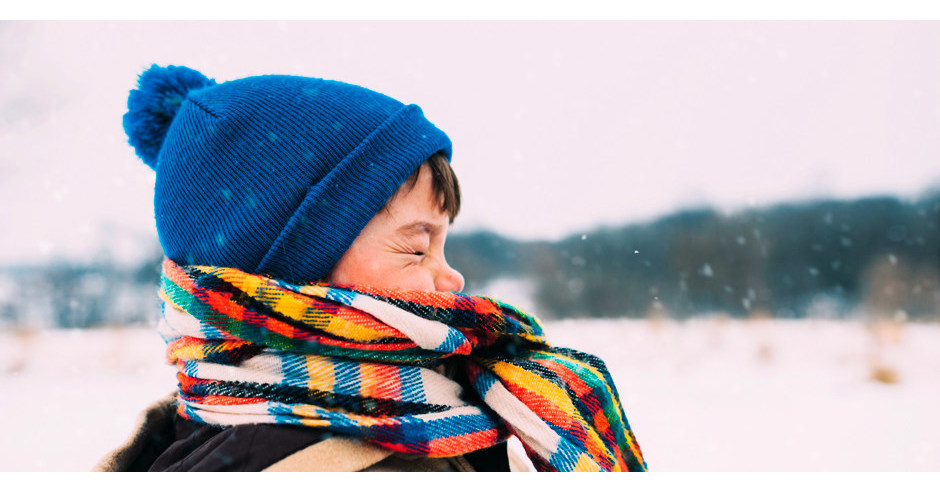As winter storms and freezing temperatures sweep across the country, it’s essential for parents to be extra cautious when it comes to keeping their kids safe. Babies and young children are particularly vulnerable to the harsh effects of extreme cold, and it’s important to know how to bundle them up and when to keep them inside.
“Babies are especially vulnerable to cold due to the fact that they have a large body surface area compared to their size, which causes them to lose heat more rapidly,” says Dr. Esther Liu, chair of pediatrics at the University of Maryland Baltimore Washington Medical Center. “Additionally, they don’t have the ability to regulate their temperatures as well when they are young.”
Dr. Tiorra Ross, a pediatrician in Houston, adds that infants and younger children face another challenge: they can’t always communicate their discomfort or symptoms when they feel cold. “Cold weather is more dangerous to infants and younger children because they cannot communicate to their caregiver their symptoms and express that they are cold,” she explains.
With these risks in mind, parents need to be proactive and vigilant. Here’s how to ensure your kids stay safe during extreme winter conditions.
When Should Kids Stay Indoors?
Before you let your child race outside to play in the snow, consider a few key factors. Temperature alone isn’t the only indicator of safety—wind chill and moisture are also important. “Getting wet will drop body temperature more quickly because you lose more heat through wet skin,” explains Dr. Liu.
Wind chill can dramatically increase the risk of frostbite and hypothermia. “If the temperature is below -15°F, it’s a good day to stay inside,” advises Dr. Tracy Butler, a pediatrician in Colorado. “At that point, frostbite and hypothermia can set in within minutes of exposure.”
As much as your child might love a snow day, it’s important to know when to call it quits for outdoor play. Short bursts of time outside, with breaks to warm up inside, are key in preventing cold-related injuries.
How to Stay Safe Outdoors in Extreme Cold

If your child is eager to play outside, here are expert tips on how to keep them warm and safe in extreme cold:
1. Dress Them in Layers
When dressing kids for the cold, layers are the best defense. “Layering allows you to adjust the amount of warmth depending on how the child feels,” says Dr. Liu. A good layering system includes:
- Base layer: Moisture-wicking fabrics like wool or synthetic materials to keep sweat away from the skin.
- Insulating layer: Fleece or down jackets provide warmth without excess bulk.
- Outer layer: A water-resistant or waterproof coat will protect from rain, snow, and wind.
For younger kids, mittens are preferred over gloves, as they keep the fingers warmer by keeping them together. A warm hat, boots, and insulated socks are also a must.
2. Protect Them from the Wind
Strong winds can make the cold feel much colder. When you’re out with younger kids in strollers, Dr. Erik Johnson of Pediatrix Medical Group recommends using a stroller cover or weather shield to block the wind. Regularly check on their extremities (hands, feet, ears, and nose) to make sure they’re not getting too cold.
3. Monitor Time Outdoors
There’s no fixed rule for how long kids can safely stay outdoors in extreme cold, as every child is different. But pediatricians recommend setting limits based on the temperature and wind chill. “If your child is shivering, it’s time to come inside for a warm-up,” says Dr. Butler. Short, regular intervals of outdoor play, followed by indoor warmth, is the safest way to go.
Cold Weather Safety in Cars
On chilly days, you may decide to drive instead of walking. But there are a few important safety precautions to remember when traveling in cold weather with young children:
- Remove bulky coats in car seats: “No child should wear a coat while in a car seat,” says Dr. Ross. Bulky jackets can interfere with the safety harness and reduce its effectiveness in the event of an accident.
- Use blankets for warmth: If the car is still warming up, drape your child in a blanket over their car seat harness or seat belt to keep them cozy.
- Don’t overdo the car heater: While it’s tempting to crank the heat, the car should be warm enough for comfort, not sweltering. Dr. Johnson recommends dressing your child appropriately for the weather outside and keeping the car at a comfortable temperature.
Sleep Safety Tips for Babies
For babies, maintaining the right temperature at night is just as important as during the day.
The ideal room temperature for infants is between 68 and 72°F. Overheating can increase the risk of sudden infant death syndrome (SIDS), so it’s crucial to avoid excessive layers or bedding.
- Sleepwear instead of loose blankets: Avoid blankets, pillows, and crib bumpers, which can pose suffocation risks. Instead, opt for one-piece sleepers or wearable blankets that keep your baby warm but safe.
- Space heater safety: If you rely on space heaters, ensure they are kept away from children, especially crawling infants. Never use a space heater near a crib or bed. Make sure the heater has an automatic shut-off feature in case it tips over, and avoid using extension cords.
How to Tell If Your Child Is Too Cold
It’s important to watch for signs that your child may be too cold, especially since younger kids may not be able to communicate their discomfort. Key signs to look for include:
- Shivering: While this is typically a later sign, infants around six months or older may begin to shiver when they’re cold.
- Discoloration of skin: Look for pale, cool, or red skin on the face, hands, and feet. The body tries to send blood to the core first, leaving extremities vulnerable to frostbite.
- Complaints of pain or numbness: Frostbite may cause burning pain, numbness, or tingling, especially in fingers, toes, nose, and ears. If your child is in pain, move them to a warm environment and apply warm (not hot) water to affected areas.
In severe cases, hypothermia can set in. Symptoms of hypothermia include slurred speech, lethargy, and clumsiness. If you suspect hypothermia, call 911 immediately.
Conclusion
Extreme cold weather can be dangerous for young children, but with the right precautions, they can still enjoy winter fun safely. Dress them in layers, monitor time outdoors, and keep an eye out for signs that they might be getting too cold. By following expert advice, you can ensure that your little ones stay warm, comfortable, and safe all winter long.
Our editorial team has thoroughly fact-checked this article to ensure its accuracy and eliminate any potential misinformation. We are dedicated to upholding the highest standards of integrity in our content.







Leave a Comment